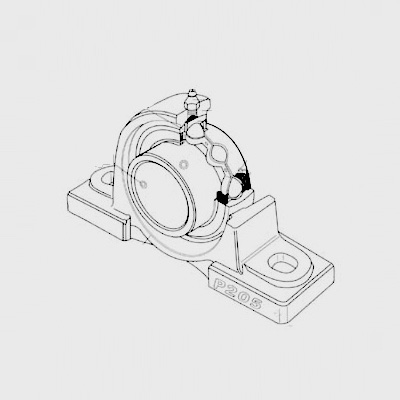
Nov . 11, 2024 07:22 Back to list
thrust ball bearings pdf
Understanding Thrust Ball Bearings Design, Function, and Applications
Thrust ball bearings are a critical component in many mechanical systems, designed to accommodate axial loads, which are forces that act along the axis of the shaft. These bearings consist of two races and a ball element, creating a simple yet effective means of supporting axial loads while allowing limited rotation. Here, we will delve into the design, functionality, and common applications of thrust ball bearings.
Design Elements of Thrust Ball Bearings
A typical thrust ball bearing comprises three main parts the shaft race, the housing race, and the balls. The shaft race is mounted on the shaft, while the housing race is fixed to the casing of the machine. The balls sit in a circular arrangement between these two races, allowing for smooth movement. This design is crucial because it allows the bearing to handle substantial loads without seizure or excessive wear.
Thrust ball bearings come in various designs, including single direction and double direction types. Single direction thrust ball bearings can support axial loads in one direction only, whereas double direction bearings can accommodate loads from both sides. The choice between these types depends largely on the specific application requirements.
Functionality and Performance
The primary function of a thrust ball bearing is to reduce friction between moving parts while supporting axial loads. When an axial load is applied, the balls roll within the races, distributing the load evenly and minimizing the risk of wear or damage to the bearing surfaces. This rolling motion significantly lowers friction compared to sliding motion, which is particularly beneficial in high-speed applications.
The performance of thrust ball bearings is influenced by several factors, including load capacity, speed limits, and materials used. Generally, thrust ball bearings are capable of handling moderate speeds and are usually not suitable for situations where radial loads are present, given their design is specialized for axial loads.
thrust ball bearings pdf

Material Considerations
Thrust ball bearings are commonly made from high-carbon chromium steel, which provides excellent wear resistance and strength. For applications involving corrosive environments, stainless steel or ceramic materials may be used to enhance durability. The choice of material affects the bearing's lifespan, corrosion resistance, and overall performance, making it essential to select the right material based on the application's specific demands.
Applications of Thrust Ball Bearings
Thrust ball bearings are widely used across various industries due to their capabilities. One prominent application is in automotive engineering, where they can be found in clutches, gear assemblies, and power steering systems. In industrial machinery, these bearings are utilized in cranes, conveyor systems, and other equipment requiring precise axial load handling.
Additionally, thrust ball bearings are employed in home appliances, such as washing machines and electric fans, where they facilitate smooth operation and enhance efficiency. Their ability to handle axial loads also makes them suitable for the aerospace industry, where reliability and lightweight components are critical.
Conclusion
In summary, thrust ball bearings play a fundamental role in contemporary mechanical systems, offering effective support for axial loads while reducing friction. Their unique design, consisting of races and ball elements, allows for efficient performance in various applications. Understanding the nuances of thrust ball bearings—such as material considerations, load capacities, and application domains—is essential for engineers and designers alike, ensuring the selection of the right bearing for each specific task. As technology advances and the demands of different industries evolve, the importance of thrust ball bearings in facilitating efficient, reliable mechanical systems cannot be overstated.
Latest news
-
Premium Deep Groove Ball Bearings | High Speed & Reliability
NewsAug.29,2025
-
Durable Scaffolding Clamps - Secure & Reliable Tube Connectors
NewsAug.28,2025
-
Common Failures in Thrust Ball Bearings and Solutions
NewsAug.22,2025
-
How Tapered Roller Bearings Can Take Shock Loads
NewsAug.22,2025
-
Angular Bearings in High-Precision Spindles
NewsAug.22,2025
-
The Impact of Misalignment on Cylindrical Roller Bearing Performance
NewsAug.22,2025
